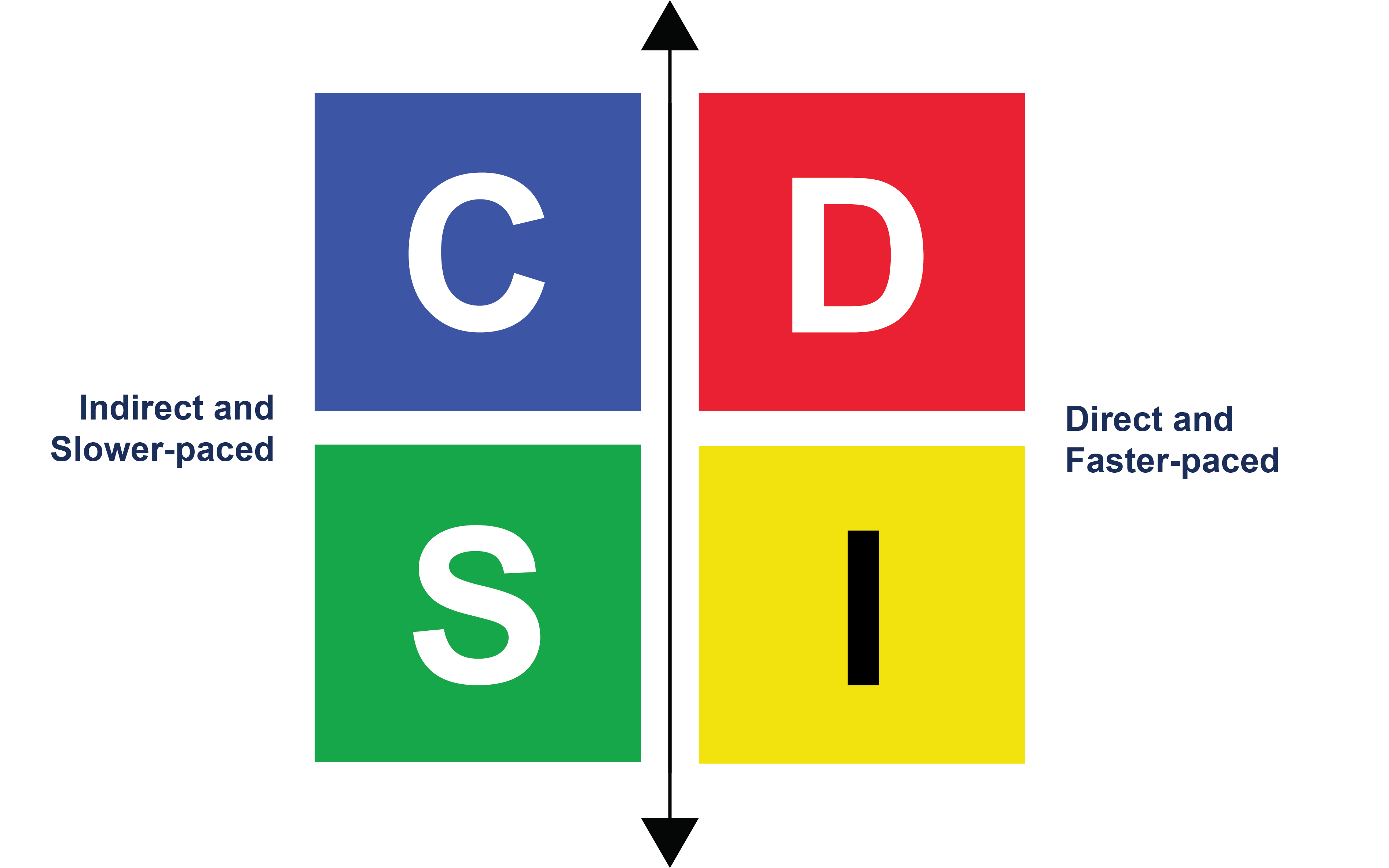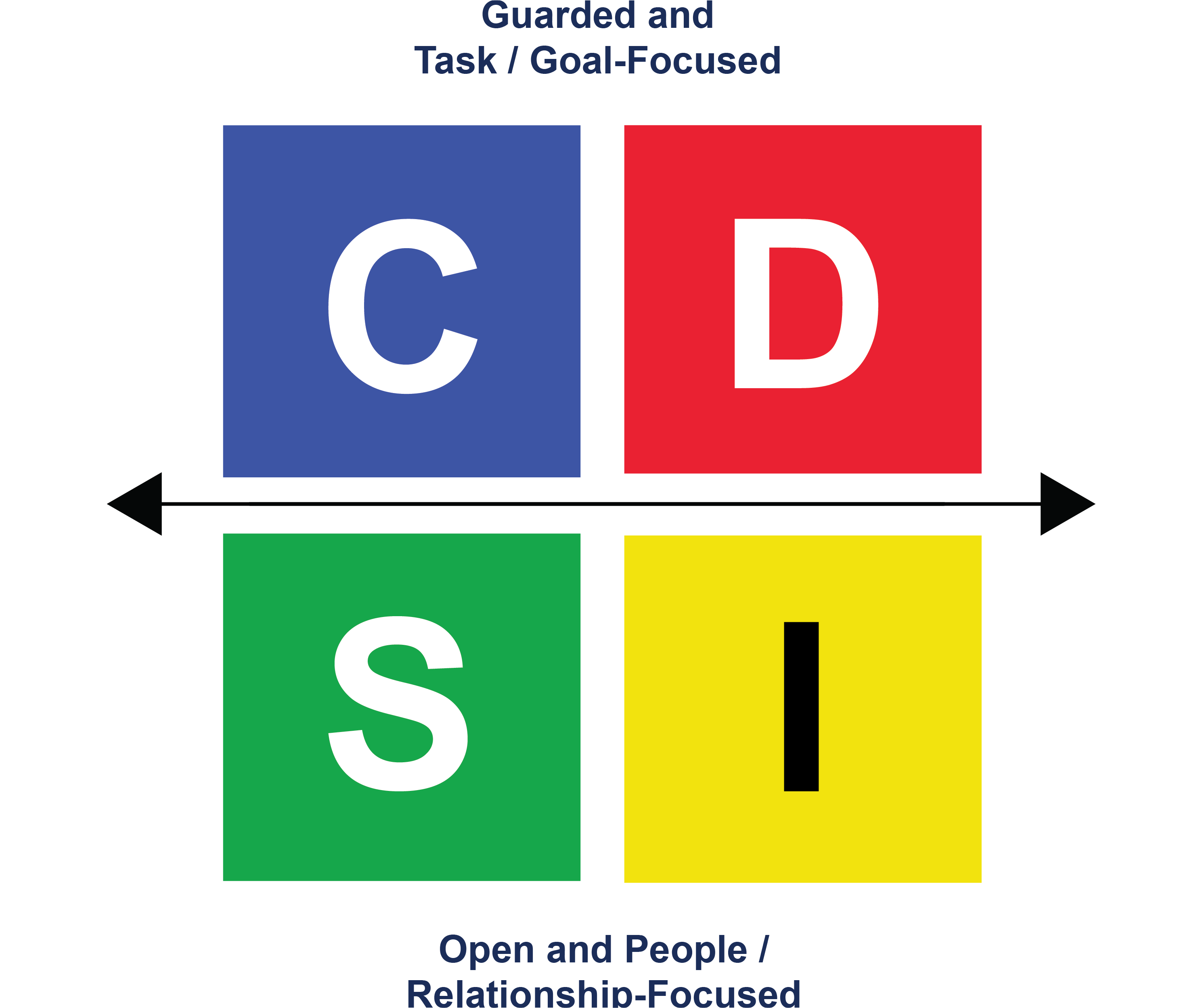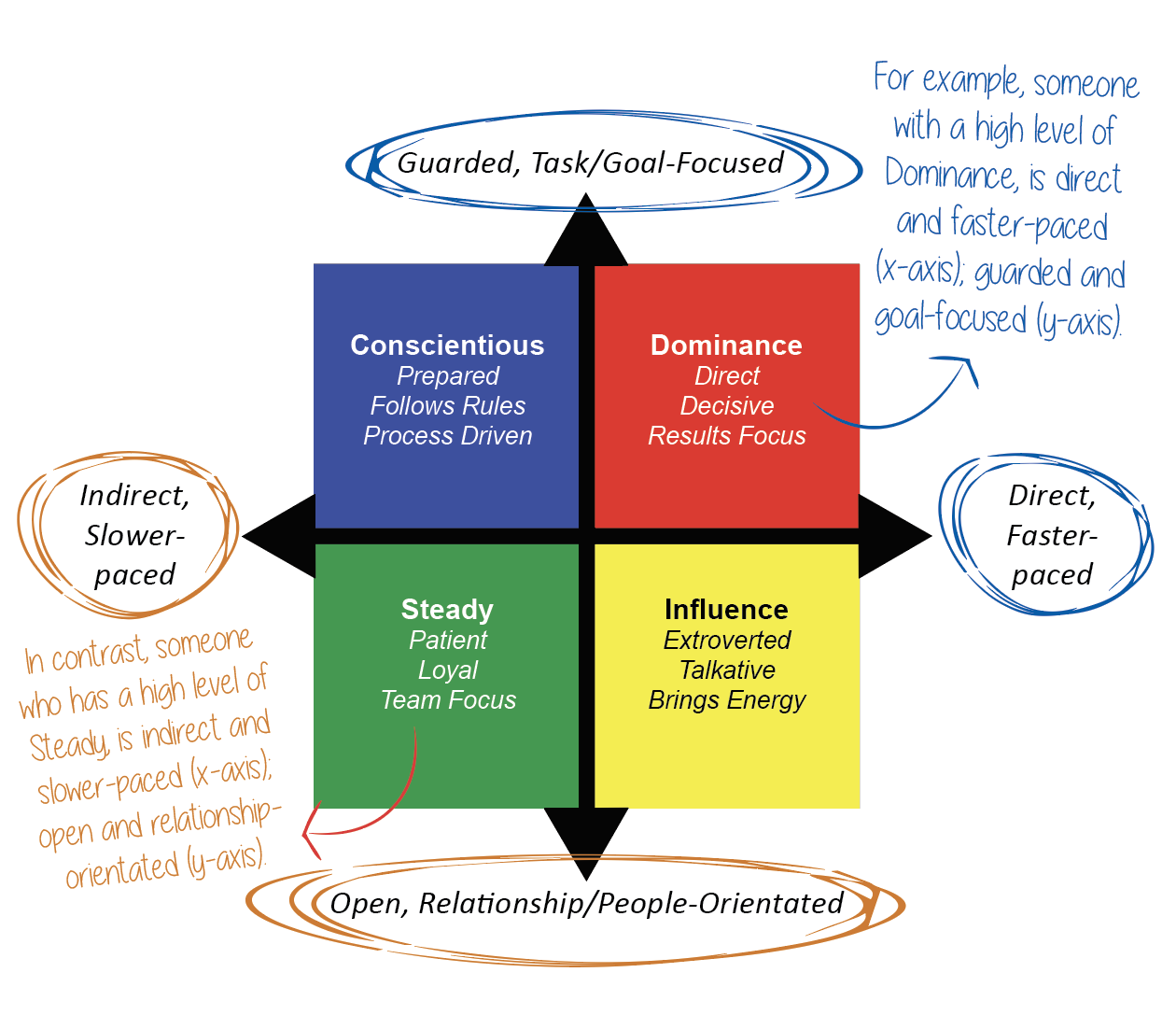Foundations of DISC Profiling
Now that you have learned about your individual DISC Profile, let's build on those foundations. These videos and activities will help you to better understand your profile and apply it to this class and dive deeper into the other DISC Styles to uncover similarities and differences to continue to build your self-awareness.

Understanding the DISC Model
DISC is a four-quadrant model measuring the degree of Dominance, Influence, Steadiness, and Conscientious behavior. Everyone has their unique level of each behavioral style within the context of their role or environment. The model explains the behavior of people with high degrees of D, I, S, and C; and as we move along we will also look at how these behaviors combine. You can use this understanding to start to identify the behaviors and styles of others.
Pace and Directness
Here’s how to identify behaviors in others based on their pace and level of directness.
Direct/Faster-Paced Behaviors
Frequently uses gestures and voice intonation to emphasize points, more likely to introduce self to others, frequent contributor in groups, less patient, expresses opinions readily, sustained eye contact.
Indirect/Slower-Paced Behaviors
Infrequent contributor in groups, reserves expression of opinions, more patient and cooperative, more likely to wait for others to introduce them, often makes qualified statements, infrequent use of gestures and little change in voice intonation.

Orientation and Openness
Look for these behaviors when working with others to determine their level of openness and focus.
Guarded/Task-Orientated Behaviors
Keeps feelings private, limited range of facial expressions, more formal and proper, avoids/minimizes physical contact, conversation stays on subject, speaks in specifics: cites facts and examples, goes with an agenda.
Open/People-Orientated Behaviors
Shows feelings and enthusiasm freely, more relaxed and warm, conversation includes digression, easy to get to know, initiates/accepts physical contact.

Identifying DISC Behaviors
Watch this video to learn how to estimate what someone else’s highest measure in DISC likely is.

Quick Recap
- Faster-paced and more direct behavior coupled with a goal orientation and guarded manner will indicate a likely Dominance or ‘D’ Style.
- Faster-paced and more direct behavior coupled with a people orientation and open manner will indicate a likely Influence or ‘I’ Style.
- Slower-paced and less direct behavior coupled with a people orientation and open manner will indicate a likely Steady or ‘S’ Style.
- Slower-paced and less direct behavior coupled with a task orientation and guarded manner will indicate a likely Conscientious or ‘C’ Style.

ACTIVITY
DISC Scales and Scenarios
The DISC Scales activity uses different scenarios to highlight the scales of behavior for each of the Dominance, Influence, Steadiness, and Conscientious styles. This brings to life the different measures of each of the DISC styles that each unique student has. Maximize the benefits from this activity by reflecting on your individual responses to the different situations while also exploring a range of responses of other styles.

